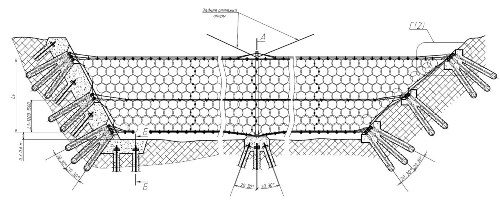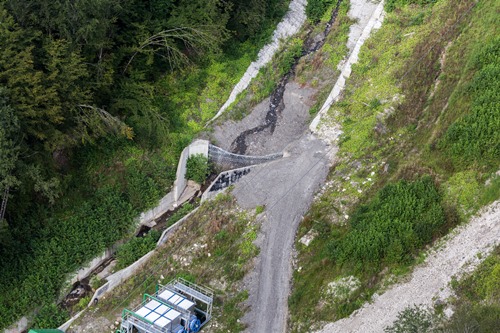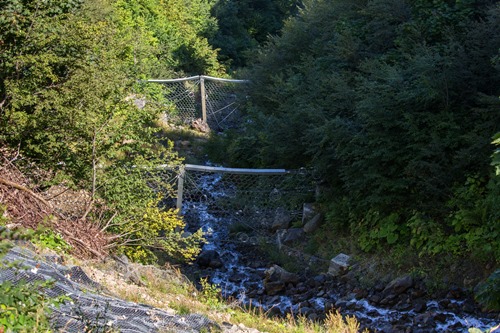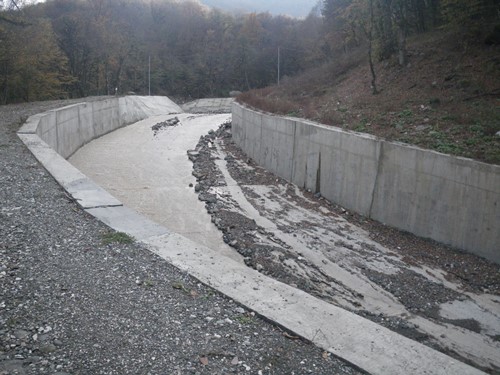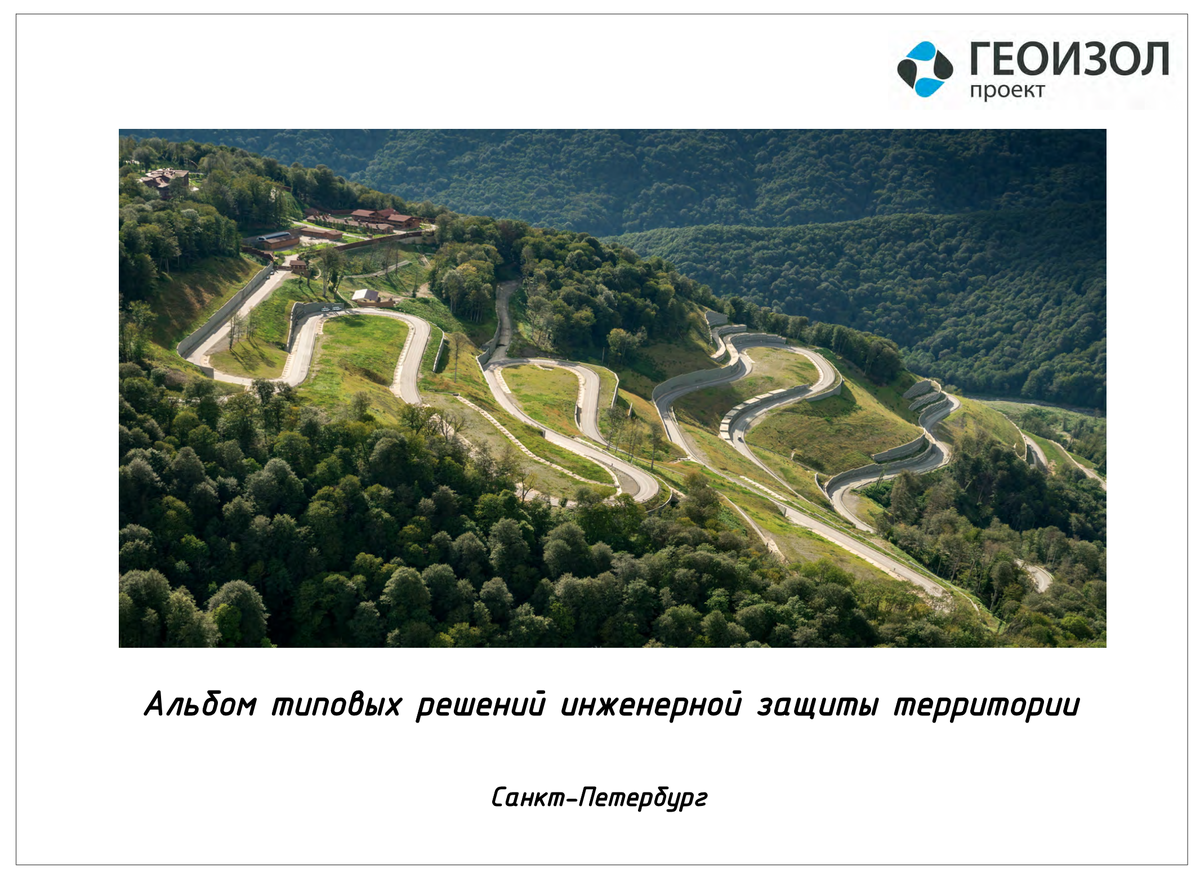Originally mudslide represents unexpected fast-moving fall of water mass off the lakes situated high in the mountains. As long as debris goes down the slope it is being filled with solid mass (soil, rock debris, tree trunks, fragments of destroyed framework, etc.) and becomes mud compound.
Mudslide begins suddenly and is characterized by sharp rise of water level and ability to move in waves. The consequences of a mudslide can be compared with rockslide, avalanche or flood damage.
The process of mudslide protection design documentation development includes:
- reviewing of investigation results;
- on-site visit;
- choice of an option and developing of solutions set;
- construction.
Methods of mudslide protection
Mudslide protection measures are aimed at mudslide hazard reducing or elimination, in other words, at controlling the mudslide process.
Flexible mudslide barrier
Installing flexible mudslide barriers made of annular celled wire with anchorage is one of the most efficient ways of mudslide protection. It stops mud flow and retains debris at the beginning of its path. Mudslide protection barriers are installed in the channel of possible mudslide fall, blocking its path. It is possible to install both a single barrier and a set of barriers along the entire mudslide hazard area. The distance for liquid mud and wild animals free pass is projected between the barrier lower end and channel bottom.
Mudslide channel
Systems of mudslide channels that allows specifying the flow path is another option of mudslide protection. They consist of the channel with walls constructed of artificial materials (for example, cast-in-place or precast reinforced constructions) or stonework. When falling down mudslide flow can go freely along this channel through inhabited locations with no effect to the buildings and facilities within the hazardous area and protecting lives of people. The dimensions of the mud flow channel are determined by the results of prior engineering investigations.

